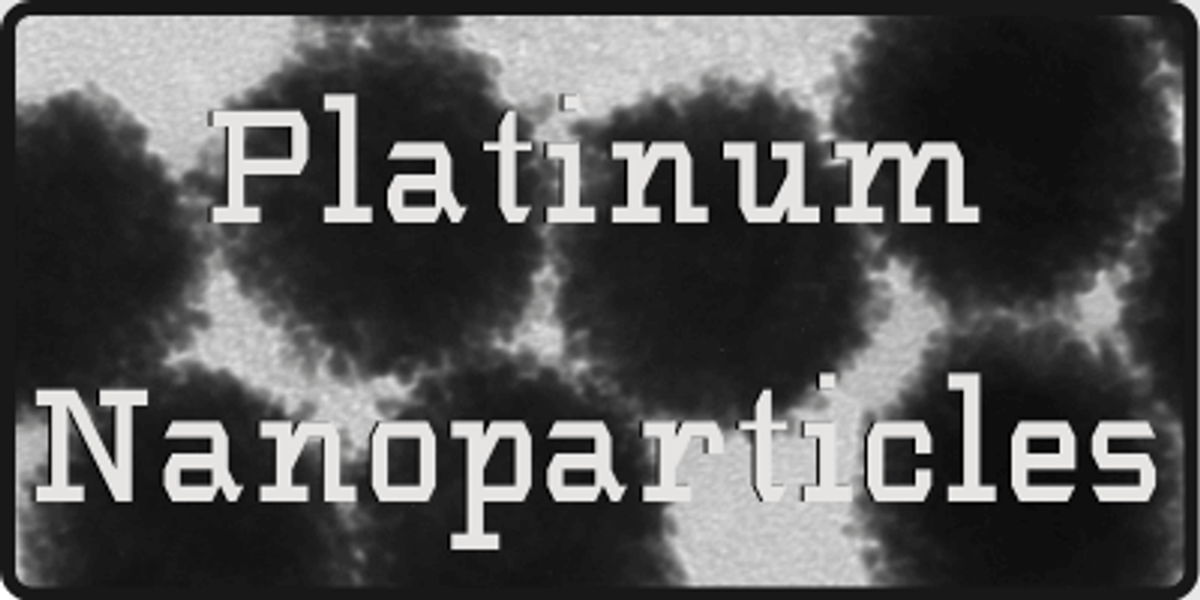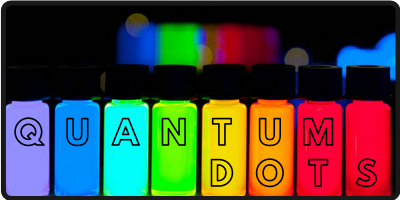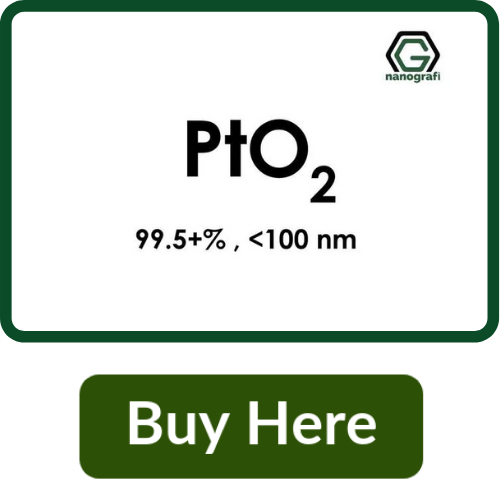A Player Across the Field: Platinum Nanoparticles
Nanoparticles of platinum have an important role in
various fields. The most important of them being the energy and medicine
industries. Readily exploited properties of platinum are enhanced through
nanotechnology to increase the efficiency of its applications. Fuel cells,
biosensors, and medical treatments have been greatly affected by the
development of Pt-based nanoparticles.
What is Platinum?
Platinum was discovered in South America before Columbus and its name is derived from the Spanish word “platina” meaning little silver. It is a transitional metal element with atom number 78 and it is one of the rare earth elements. It is usually found unbound in nature and appears as a whitish-gray, silver-like metal that is solid under normal conditions. The melting point of the platinum is around 1770°C and retains its excellent properties at high temperatures [1]. This dense metal is soft, malleable and ductile. Its malleable nature makes it easy to shape while ductile nature prevents fractures in its structure. One of the most important properties of platinum is its corrosion resistance. It’s chemically unreactive against oxygen and relatively resistant to acids.
Platinum is commonly used as a catalyst, especially for the treatment of exhaust gasses, in dental fillings, surgical tools, jewelry, electrical industry, lasers, and photographic materials. With the improvements in nanotechnology, the use of platinum nanoparticles has also attracted attention. Catalytic properties of platinum can be enhanced at nanoscales because of the increased surface area and unique chemical properties revealed at this scale. Platinum catalysts are commonly used in fuel cells, sensors, and the petroleum and automotive industry. Nanosized platinum materials also have the potential to be useful in medical applications such as biosensors and cancer treatment.
Applications of Platinum Nanoparticles
Energy and Environment
The increased energy demand and harmful effects of the energy sector on the environment have forced scientists to improve the key materials of these subjects. The use of platinum-based catalysts is important to the energy industry and environmental applications. Platinum has already been a part of fuel cells, petroleum cracking, and isomerization. However, it is necessary to improve the catalytic activity of platinum to obtain more effective processes. Another concern is the amount of platinum consumed since it is an expensive rare earth metal. Scientists use nanotechnology to find solutions to these problems. The nanosized platinum materials show higher surface area, therefore, increased catalyst active sites. Platinum is used in fuel cells since it has high stability and electrocatalytic activity towards the oxidation of hydrogen and small organic molecules. These key reactions in the fuel cells are; hydrogen oxidation reactions (HOR), methanol oxidation reactions (MOR), ethanol oxidation reactions (EOR), formic acid oxidation, and oxygen reduction reaction (ORR). Hydrogen oxidation reactions take place in proton exchange membrane fuel cells (PEMFCs). Platinum is the most active material toward HOR and widely used as the anode material of PEMFCs. However, due to the high price tag of platinum these hydrogen fuel cells can not compete with conventional gasoline technology. Pt-based alloyed nanomaterials and Pt-based materials dispersed on high surface area substrates are promising options to reduce the cost. Binary or ternary Pt alloy nanomaterials are used to reduce the effect of CO on Pt catalysts. Materials such as Ru, Co, Mo, W, and Sn are used for the binary Pt alloy nanomaterials. Amongst these materials, Ru has displayed the best performance. For the ternary Pt alloy nanomaterials; PtRuWOx and PtRuW2C have shown better performance than binary nanomaterials [2]. Pt-based nanomaterials are also dispersed on nanotubes to increase the surface area of the catalyst. Through these applications, PEMFCs applications have gained momentum. Much like hydrogen fuel cells, methanol fuel cells use platinum as the catalyst. The most important problem for DMFCs is the poisoning effect of CO on the catalyst. Nanoporous Pt electrodes with the surface area 20 times higher than the conventional bulk Pt electrodes enhances the electrocatalytic activity towards the oxidation of methanol. The addition of other metals to pure Pt also decreases CO poisoning. Pt-based alloy nanomaterials and nanostructured supports are also used in ethanol and formic acid fuel cells with the same logic. Furthermore, the above mentioned nanotechnological applications decrease the amount of platinum used in fuel cells considerably. Consequently, the cost of related technologies is reduced significantly.
In the environmental side of the things, platinum is very effective for the oxidation of CO to CO2. CO is a toxic gas produced through the incomplete combustion of fossil fuels. Conventional devices use bulk platinum for the reduction of CO gas emissions in the atmosphere. The increased surface area of the Pt-based nanoparticles increases both oxidation efficiency and sensitivity of CO detection in the atmosphere. NOx molecules are also oxidized by Pt-based nanoparticles reducing the damaging effect of fossil fuels on the environment.
Biosensors
Biosensors detect biomolecules or microorganisms in a sample. A biorecognition material that produces a signal according to the concentration of biomolecules in the sample, is connected to a transducer. Biosensors are low cost, easy-to-use, and portable. Their potential application areas are medicine, agriculture, environmental monitoring of toxic compounds and many other areas. Conventional biosensors with enzyme-based equipment are widely used because of the high catalytic activity and sensitivity of enzymes. However, enzymes are unstable and have limited selectivity. Nanomaterials can be used to improve the properties of biosensors such as selectivity, the limit of detection (LOD), response time and stability. High conductivity, catalytic activity, magnetic properties and surface area of nanomaterials are desirable properties in biosensors. Metal nanoparticles such as gold, platinum, silver, and palladium and metal oxides can be used in biosensors. In contrast to other materials, Pt nanoparticles catalyze the oxidation of H2O2 which commonly produced during oxidation reactions. This ability to oxidize H2O2 increases the response of biosensor. An important example of biosensor applications is glucose detection. Enzymatic glucose sensors are easily affected by temperature, pH, and humidity[3]. Pt metal can be used as electrocatalysts in place of enzymes for better stability. However, bulk Pt electrocatalysts have slow glucose oxidation properties and consequently low selectivity. Using Pt nanomaterials overcome this problem because of the increased surface area. Biosensors for glucose detection can be further improved by dispersing Pt nanomaterials on carbon nanotubes or adding other metals to the pure Pt-nanoparticles.
Read about Quantum Dots
Medicine
Medicine has always been the most interesting topic for humankind. The mysterious diseases of the past have become irrelevant and the most difficult problems have become more understandable with the developments in medicine. Now, the future of medicine is in the nanoscale world. Manipulation of nanoparticle properties offers promising developments in medicinal applications. Especially metal nanoparticles have attracted attention in recent years. Pt nanoparticles are used against pulmonary inflation, cancer, oxidative stress, vascular and cerebrovascular diseases. Platinum compounds have been successfully used in cancer treatments. It affects cancer cells by inhibiting cell division. Particularly, cis-platin is well known in the area and approved for the treatment of testicular and ovarian cancer. For this reason, platinum nanoparticles have attracted attention for further development. Medical applications of platinum nanoparticles are in combination with other materials rather than pure platinum nanostructures. The combination can be in the form of an alloy, core-shell or bimetallic compounds. For example, FePt@CoS2 is found to be more efficient than cis-platin in treating cancer cells[4]. This is because NPs can penetrate through the cell membrane and directly interfere with cell functions.
Artificial antioxidant effects of Pt nanoparticles have the potential to aid oxidative stress resulting from reactive oxygen species and reactive nitrogen species. In addition to ROS and NOS, Pt nanoparticles can also work against other free radicals such as nitric oxide, DPPH, and hydroxyl. This reactive species can cause serious damage to human cells leading to aging, pulmonary inflation, and even brain damage.
Antibacterial Agent
Antibacterial properties of metals such as silver (Ag) and Mercury (Hg) are well known and explored. However, these materials are toxic to human cell posing a great threat to human health. For this reason, scientists have been investigating alternative antibacterial agents. Platinum nanoparticles have been attracting attention as an antibacterial agent because of its non-toxic nature. Size, shape, and chemical activity of nanoparticles affect the antibacterial properties. For example, 1-3 nm PtNPs are effective even at low concentrations. PtNPs disable bacterial growth by inhibiting ATP-dependant protein synthesis and causing DNA damage to bacteria. Coupling platinum with other metals to obtain bimetallic nanoparticles also improves the antibacterial effect [5].
How to Utilize Platinum Nanoparticles?
Platinum nanoparticles have various application areas. High surface area, electrical conductance, and enhanced catalytic properties of Pt-nanoparticles are superior to bulk platinum materials. Industries such as energy and medicine that have already been utilizing platinum are quickly realizing the potential of Pt-nanoparticles. The performance of fuel cells is enhanced with the use of Pt-nanoparticle. The automotive industry is taking advantage of enhanced fuel cells for future developments. Medicinal applications of Pt-nanoparticles mainly focus on biosensors and targeted treatments. The sensitivity of biosensors is improved due to the increased catalytic activity of Pt-nanoparticles. Another important application of Pt-nanoparticles is in cancer treatment. Pt-nanoparticles offer targeted cancer treatment that is more effective than conventional Pt cancer treatments. Dangerous compounds in the human body such as reactive oxygen species, reactive nitrogen species, and free radicals can be reduced through the use of Pt-nanoparticles. Treating these compounds can prevent several diseases and aging. Furthermore, using Pt-nanomaterials instead of bulk Pt materials will decrease the consumption of platinum and reduce the cost of these technologies. All in all, Pt-based nanomaterials have great potential for future developments of key industries in our society.
References
1. Platinum. 07.02.2020]; Available from: rsc.org/periodic-table/element/78/platinum.
2. Chen, A. and P. Holt-Hindle, Platinum-based nanostructured materials: synthesis, properties, and applications. Chemical reviews, 2010. 110(6): p. 3767-3804.
3. Kucherenko, I., et al., Advances in nanomaterial application in enzyme-based electrochemical biosensors: a review. Nanoscale Advances, 2019. 1(12): p. 4560-4577.
4. Bhattacharya, R. and P. Mukherjee, Biological properties of “naked” metal nanoparticles. Advanced drug delivery reviews, 2008. 60(11): p. 1289-1306.
5. Puja, P. and P. Kumar, A perspective on biogenic synthesis of platinum nanoparticles and their biomedical applications. Spectrochimica Acta Part A: Molecular and Biomolecular Spectroscopy, 2019. 211: p. 94-99.
Recent Posts
-
Advanced Materials for Unmanned Aerial Vehicle (UAV) Protection Against Laser
Consider a UAV on a critical mission, rendered inoperative by a sudden laser attack. With the increa …26th Jul 2024 -
Simulation and Modeling of Material Properties
Our world is composed of a dazzling array of materials, each with its own unique properties that dic …19th Jul 2024 -
Advanced Coatings for Superior Corrosion and Wear Resistance
Corrosion and wear pose significant challenges across various industries, leading to substantial eco …12th Jul 2024








